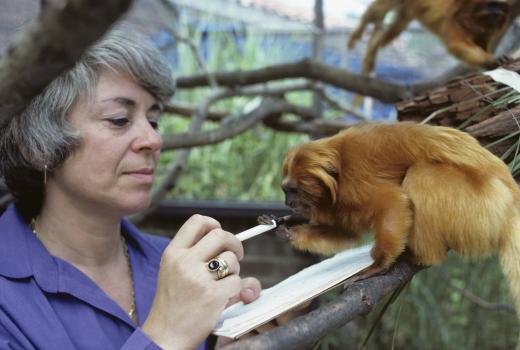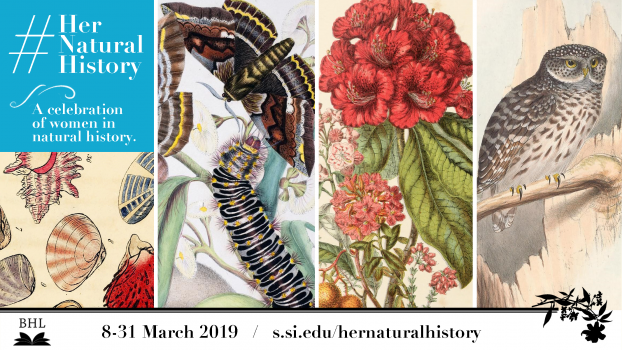When the Biodiversity Heritage Library invited the Archives to participate in their Her Natural History: A Celebration of Women in Natural History campaign, we jumped at the opportunity. After all, we have so many histories of groundbreaking women natural scientists in our collections. However, we’re certainly not starting from scratch. Over the years, our staff has really prioritized telling stories about women in natural history, from posting weekly Women in Science Wednesdays features (2013–2016) on our blog to hosting Wikipedia edit-a-thons to create and improve women scientists’ pages. But believe me, we always have more to share. We invite you to follow along on social media, participate in the transcription challenge, and lend your research skills to the Wikipedia edit-a-thon to increase the visibility of women in natural history.
Every Friday, beginning March 8, look out for social media posts highlighting women natural scientists on our Twitter, Facebook, and Instagram. Bonus: If you’re on Twitter, follow along for an extra post every Tuesday. And if you love what you see, search the #HerNaturalHistory hashtag to read about the brilliant women in natural sciences whose stories exist in other cultural heritage institutions across the country.
Looking for a challenge? We’re teaming up with the Smithsonian Transcription Center for a women in natural history-themed transcription challenge. Beginning on March 8, help a team of #volunpeers transcribe field notes from conservation biologist Devra Kleiman and botanist Cleofé Calderón. Dive into observations of golden lion tamarins with Kleiman, who worked at Smithsonian’s National Zoological Park from 1972 to 2001. And head to South America with Calderón, who collected and researched grasses for Smithsonian’s Department of Botany from 1965 to 1987.

If you’re looking for another interesting citizen science opporunity, the Biodiversity Heritage Library and Smithsonian Libraries is hosting a Women in Natural History Wikipedia Editing Workshop on March 13, when you can help create new and improve existing webpages. Some of the women from our collections who don’t have a Wikipedia page yet are Melanie R. Bond, Ashley Egan, and Lisa Stevens. You can also help us improve a few pages that don’t quite do these important women scientists justice, including Cleofé Calderón, Mireya Correa, Charlotte Gower Chapman, Roxana Stinchfield Ferris, and Devra Kleiman.

We bet that by the end of the campaign, you’ll be able teach us a thing or two. We hope you’ll join us in helping to make women’s contributions to natural history more fully known and accessible this women’s history month. Stay tuned!
Related Resources
- Her Natural History: A Celebration of Women in Natural History, Biodiversity Heritage Library
- "Happy Women's History Month! Join Us for #HerNaturalHistory Starting 8 March 2019," by Grace Costantino, Biodiversity Heritage Library
- “Audiences Solving Mysteries in Science,” by Meghan Ferriter, The Bigger Picture, Smithsonian Institution Archives
- “Formidable: Women in Science,” by Ellen Alers, The Bigger Picture, Smithsonian Institution Archives
- “Let’s Play the Name Game: Identifying Women Scientists on the Flickr Commons,” by Susannah Wells, The Bigger Picture, Smithsonian
- “Maria Mitchell and the Smithsonian,” by Deborah Warner, The Bigger Picture, Smithsonian Institution Archives
- “Playing Against Type: Women, Science, and Stereotypes,” by Marcel Chotkowski LaFollette, The Bigger Picture, Smithsonian Institution Archives
- Women in Science Wednesdays, Smithsonian Institution Archives
Produced by the Smithsonian Institution Archives. For copyright questions, please see the Terms of Use.


Leave a Comment